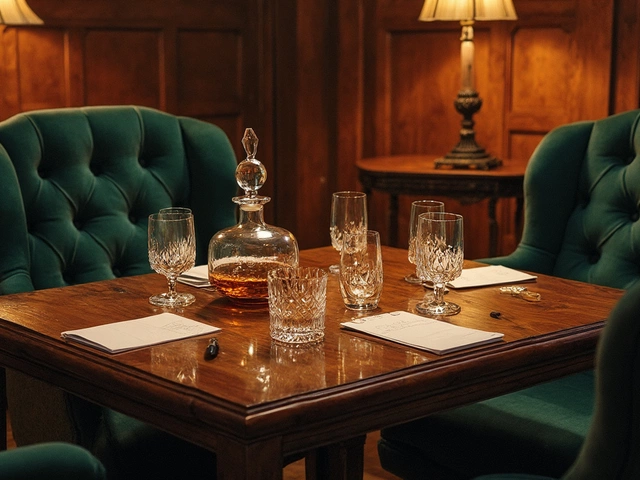Getting Used to Whiskey: A Friendly Guide for New Fans
If you’ve never held a dram before, the world of whiskey can feel intimidating. The amber glow, strong aromas, and endless brand names make it easy to think you need a sommelier’s degree. The truth? All you need is a curious palate and a few simple habits. In this guide we’ll walk through the easiest ways to start loving whiskey without the headache.
Start Simple: Choose the Right Whiskey
Don’t reach for the most expensive single malt right away. Begin with a smooth, lower‑proof bourbon or an Irish whiskey. These styles are generally sweeter and less smoky, which helps your taste buds adjust. Look for bottles around 40% ABV, labeled “smooth” or “easy drinking.” A few popular starter choices are Maker’s Mark, Jameson, or Bulleit Bourbon.
When you buy, grab a small bottle or a sampler pack. That way you can try a couple of flavors without committing to a full bottle. Many online shops sell 50‑ml miniatures, perfect for experimentation.
Practice Makes Perfect: Tasting Tips & Food Pairings
First sip, don’t chug. Let the whiskey sit on your tongue for a few seconds, then notice the sweet, spicy, or smoky notes. Swirl gently, then take a small sip and let it roll over your palate. You’ll start noticing layers—vanilla, caramel, oak, maybe a hint of fruit.
Water is your secret weapon. Add a few drops of room‑temperature water to open up the flavors. The alcohol melts, and the aroma becomes clearer. It’s okay to adjust the amount until it feels comfortable.
Food can make the experience smoother. Light cheeses, dark chocolate, or a handful of nuts work well. Even a slice of apple or a piece of toasted bread can balance the alcohol and highlight the whiskey’s sweetness.
Keep a simple notebook. Jot down the brand, how it smelled, what you tasted, and whether you liked it. Over time you’ll spot patterns—maybe you prefer honey‑sweet bourbons or the subtle fruit of Irish whiskeys. This record saves you from buying the same thing twice.
Try a “whiskey hour” with friends. Sharing a small pour keeps the mood relaxed and gives you a chance to compare notes. No need for fancy glasses; a regular tumbler works fine as long as you hold it by the base.
Finally, be patient. Your palate evolves with each tasting, and what feels harsh now can become enjoyable in a few weeks. Stick with a routine—one or two sips a week—and you’ll notice improvement quickly.
Getting used to whiskey isn’t about mastering every nuance instantly. It’s about sipping, noting, and having fun while you learn. Pick a gentle starter, add a splash of water, pair with a snack, and keep a tiny tasting log. Before long you’ll feel confident ordering a dram at a bar and maybe even exploring deeper flavors.
Want to enjoy whiskey but find the taste a bit much? This guide breaks down why whiskey tastes the way it does and shares simple steps to help you ease into the experience. You'll learn how to pick beginner-friendly bottles, train your palate, and even mix whiskey in ways that make it more approachable. Don't force it—use these practical tips to actually enjoy your glass.
View Details

